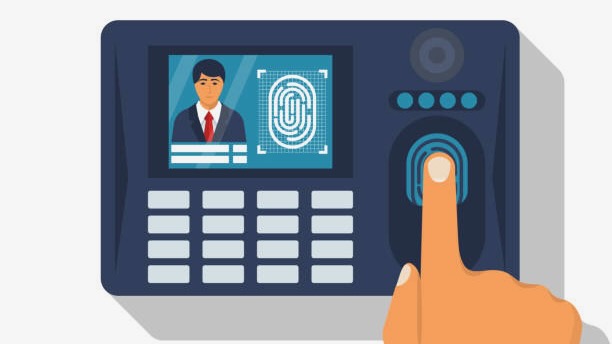Rule of Thumb: The Biometric Boom
Mark DiPietro
Technology Editor
As a general rule of thumb, things have been getting increasingly digital. Bluetooth connections are attempting to rid the world of tangled wire messes. Cryptocurrency is attempting to replace physical money with virtual wallets. Cloud storage is attempting to replace physical data warehouses with consolidated web servers. But there is one thing in tech that aims to go the opposite way, Biometrics.
As humans, especially tech users, we put an incredible amount of brain power into thinking up unique numbers, letters, and symbols that secure our information through the use of passcodes, pins and other abstract security mechanisms. While this is a serviceable way to protect our data, there has always been a push to utilize the most natural form of individuality, our bodies.
One of the earliest versions of this comes from the dawn of civilization where fingerprints were used to sign and seal clay tablets in Ancient Babylon. Over the years, using more of a refined techniques, fingerprints, genetic code, irises, voice and facial structure are only some of the aspects of our physiology that technology has used to validate identity for access to information.

Biometrics have long been used as a trope in our zeitgeist as only being used by FBI agents or Batman. In other words, only by the elite to safeguard the most sensitive information. But over the past ten years or so, Biometrics have slowly matriculated into the common man’s daily life.
A big driver in this was Apple. They have been a major player in the biometric market for years and made invaluable strides to bring this technology to the general public. In 2013, Apple introduced their iPhone 5S with a touch ID home button that read the user’s fingerprint instead of a password. Then 4 years later they introduced the iPhone X which replaced that feature with face ID.
Both these technologies largely replaced manual password input from unlocking the phone at startup to purchasing features through the App Store. They also pushed the smartphone market to adopt their own versions of biometric technologies. Controversial technology at the time, it pushed biometrics into the mainstream and got the general population more comfortable with sharing their personal, physiological details with companies as a means of data protection.
This progress has translated to business use as well. A new report by software expert GetApp suggests that due to increased cyber threats, U.S. businesses have begun widely adopting some form of biometric authentication system. The rate of use of these systems has almost tripled in 3 years from 27% in 2019 to 79% in 2022. The global adoption of biometric systems is similarly being emphasized. A report from Berkshire Hathaway subsidiary Business Wire suggests that the global market will grow from $42.9 billion in 2022 to $82.9 billion in 2027 at a CAGR of 14.1%. The major players in this market are NEC Corporation (Japan), Thales Group (France), and Aware, Inc. (U.S.A.).
There are some serious ethical concerns when it comes to collecting people’s sensitive biometric data. The most invasive and ethically prickly of these involve genetic code collection. A genetic code can be used to make extrapolations about a person’s life from a very young age including height, intelligence level, and predisposition to genetic disease to name a few. These can be helpful and lifesaving if used correctly. However, it can also be used by workplaces, universities, and insurance companies to discriminate and box out individuals that are statistically undesirables from their services. Use of biometrics have also been linked to bias. This can come in the form of a visual detection of individuals with facial hair or darker skin tones or an auditory detection of those that are not native language speakers. Regardless of the way data is collected based on biometric characteristics, it must be done so responsibly. That is why consent requirements and clear communication of when biometric data is being collected or used is essential to responsible business practice. Oversight to mitigate error is also important as these systems are used more widespread.
Biometrics has seen a relatively large bump in usage over the past few years due to its effective, reliable, and secure uses across business and personal realms. It is important that we as investors, business owners, and users of this technology do not fear or resist its implementation. Rather we should move forward with confidence with an eye on the ethical impacts that its use may have on our fellow man.
Contact Mark at markdipietro04@gmail.com

